Like recently announced PC cases from Cooler Master and others, the Corsair Frame 4000D promises “modularity” and upgradability. But what’s more important, at least in the short term, is that the Frame 4000D delivers a compelling combination of effective thermal performance in a lightweight package that’s priced reasonably, at only $94.99 USD.
Will Corsair’s 4000D make our list of best PC cases? Let’s take a look at the specifications and features of the case, then we’ll go over the features and wrap up our review with thermal testing.
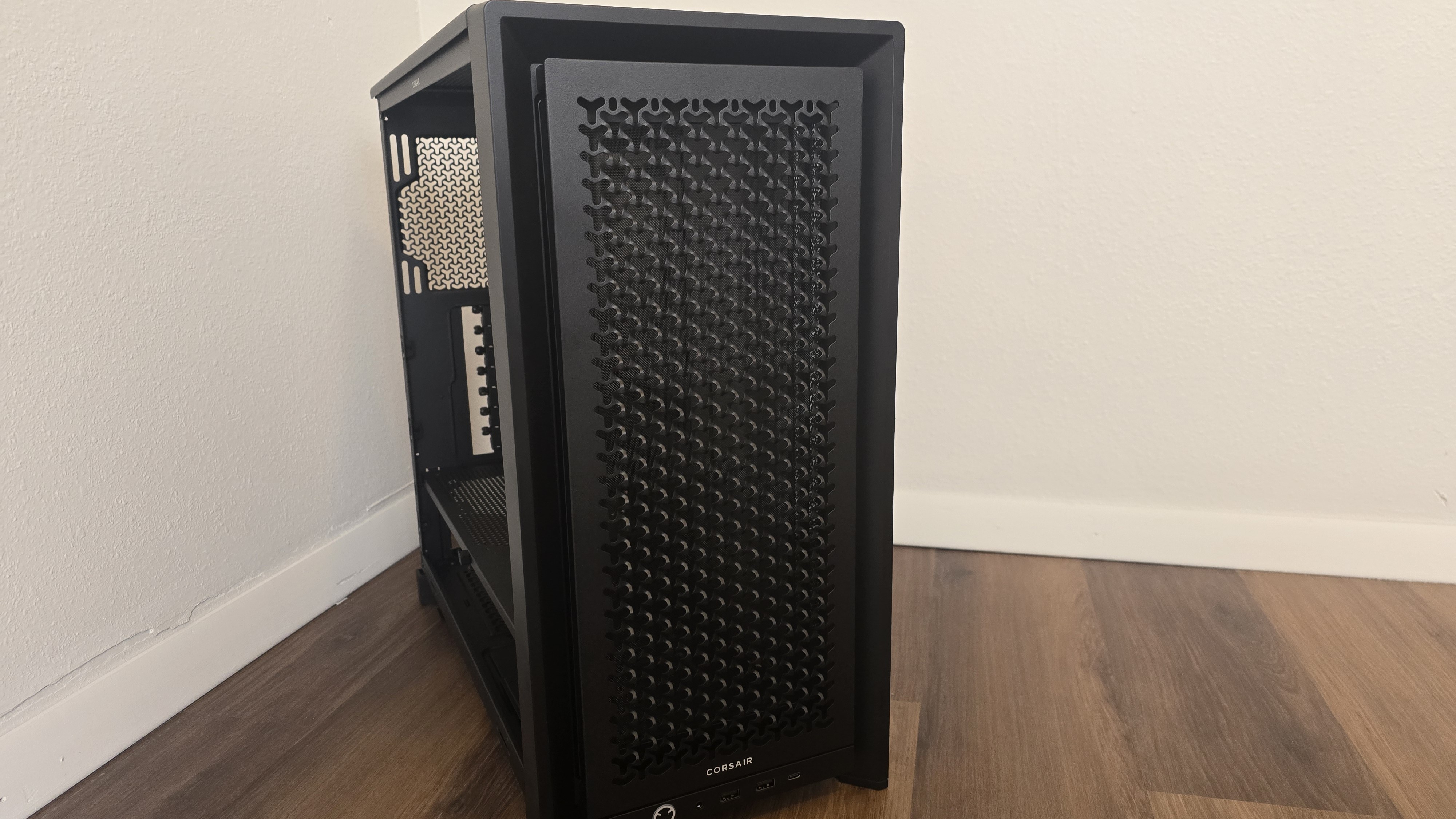
Product Specifications
Swipe to scroll horizontally
Motherboard support | EATX, ATX, Micro ATX, Mini ITX |
Color | Black or White |
Type | Mid-Tower |
Case dimensions (D x W x H) | 490 x 239 x 486 mm / 19.3 x 9.4 x 19.13 inches |
2.5-inch drive support | Up to 4x |
3.5-inch drive support | Up to 2x |
PCIe expansion slots | 7 (3 in vertical configuration) |
Fan support | Up to 12 |
Pre-installed fans | None in the version reviewed, but configurations with fans pre-installed are available to purchase for as little as $5 more |
CPU cooler clearance | 170mm |
GPU clearance | 430mm |
Vertical GPU support | Yes (riser sold separately) |
PSU length | Up to 220mm / 8.66 inches |
Radiator support | 360mm in top, side, or front |
MSRP | $94.99 USD for version reviewed $99.99 USD for 4000D RS with fans $109.99 USD for 400D RS ARGB with fans including ARGB lighting |
Other features | InfiniRail Fan Mounting System Reverse connect motherboard support |
Features of Corsair’s Frame 4000D computer case
▶️ Build quality
When I first picked up the box containing this case (it’s available in black or white), I was surprised by how light it was. Many CPU coolers I have tested weigh more. While the individual pieces of the case will bend if separated from the other components and pressure is applied, they are well-designed and feel premium. When the parts are assembled in the case, it feels sturdy, solid, and capable.
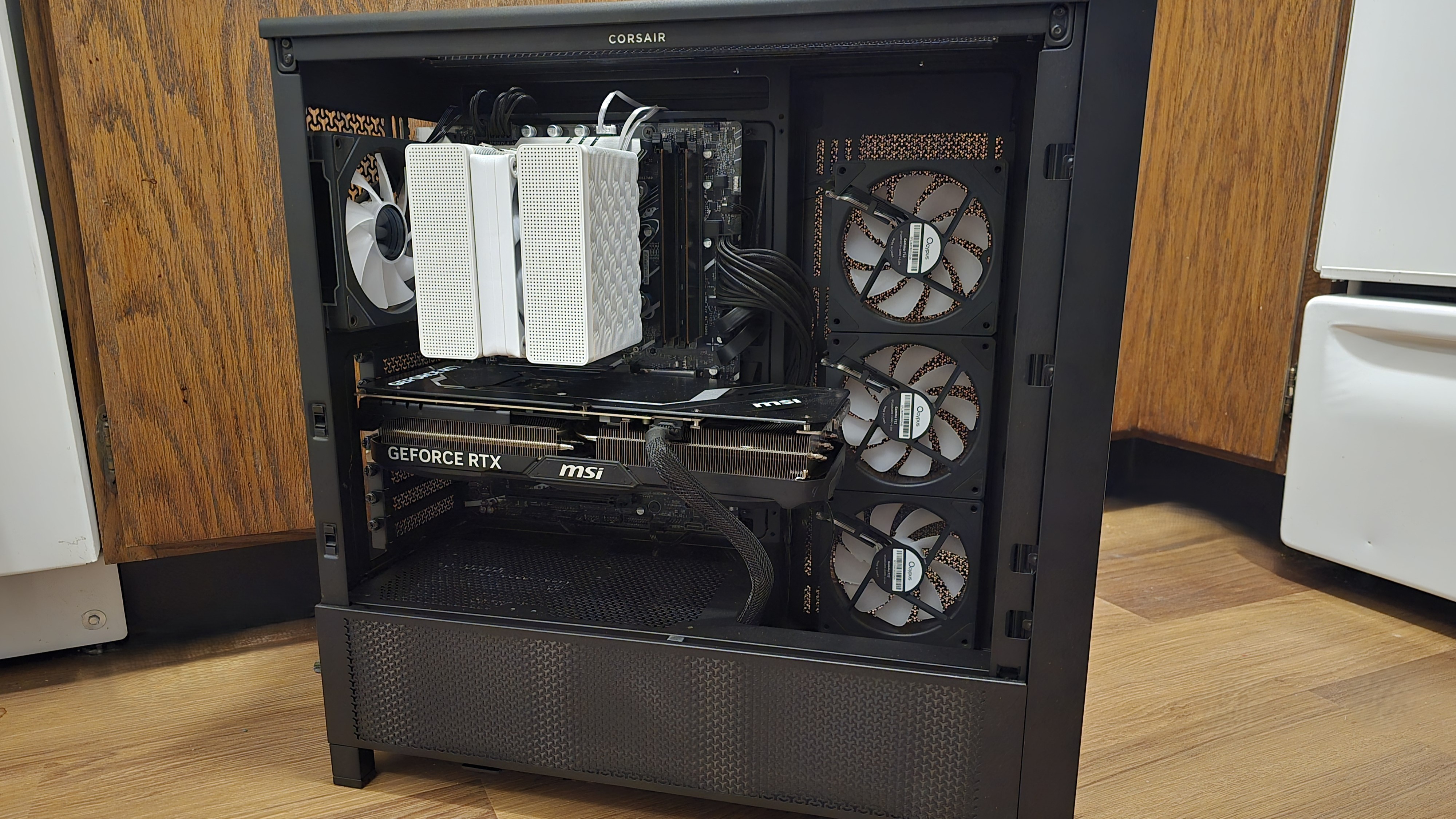
▶️ Side view and customization options, GPU Holder
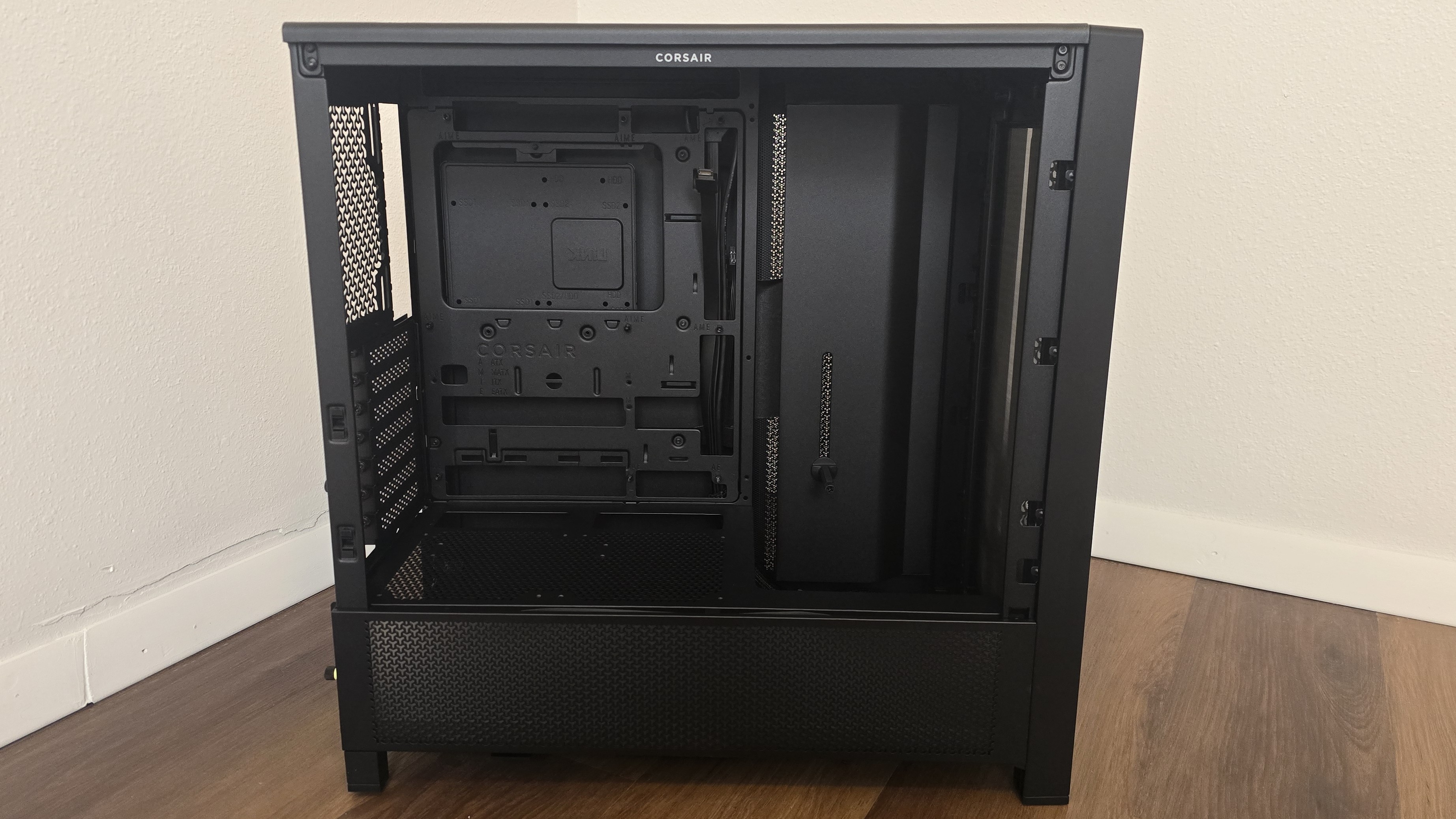
At first glance, things might seem fairly typical for a case that supports back-connect motherboards like MSI’s Project Zero – cable management bar on the right, front intake next to the bar. But if you look closer, you’ll notice that the motherboard tray is fully removable. And Corsair claims that billet aluminum upgrades will be available in the future.
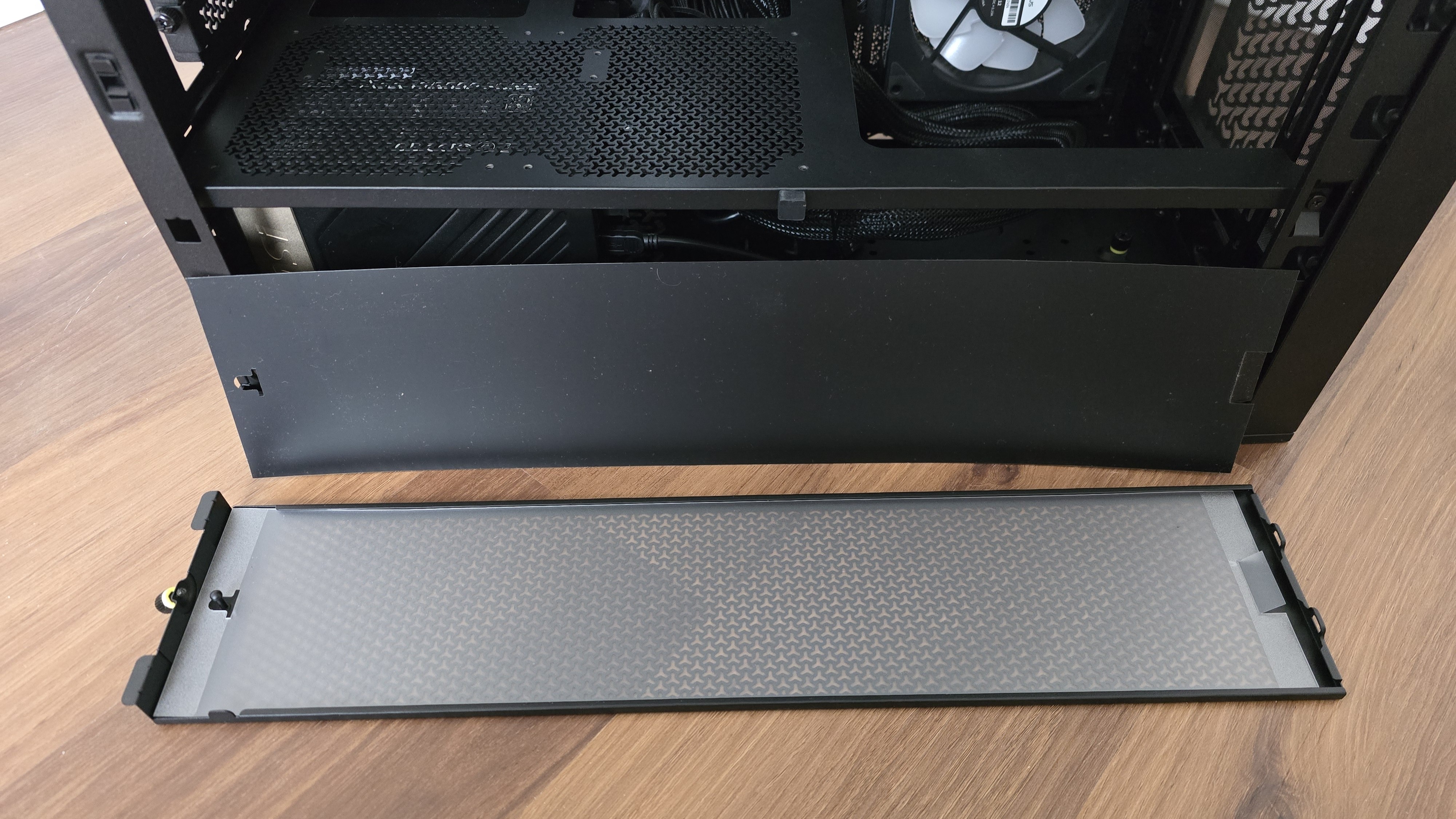
The bottom piece covering the power supply can be black or translucent, with the latter being useful for lighting.
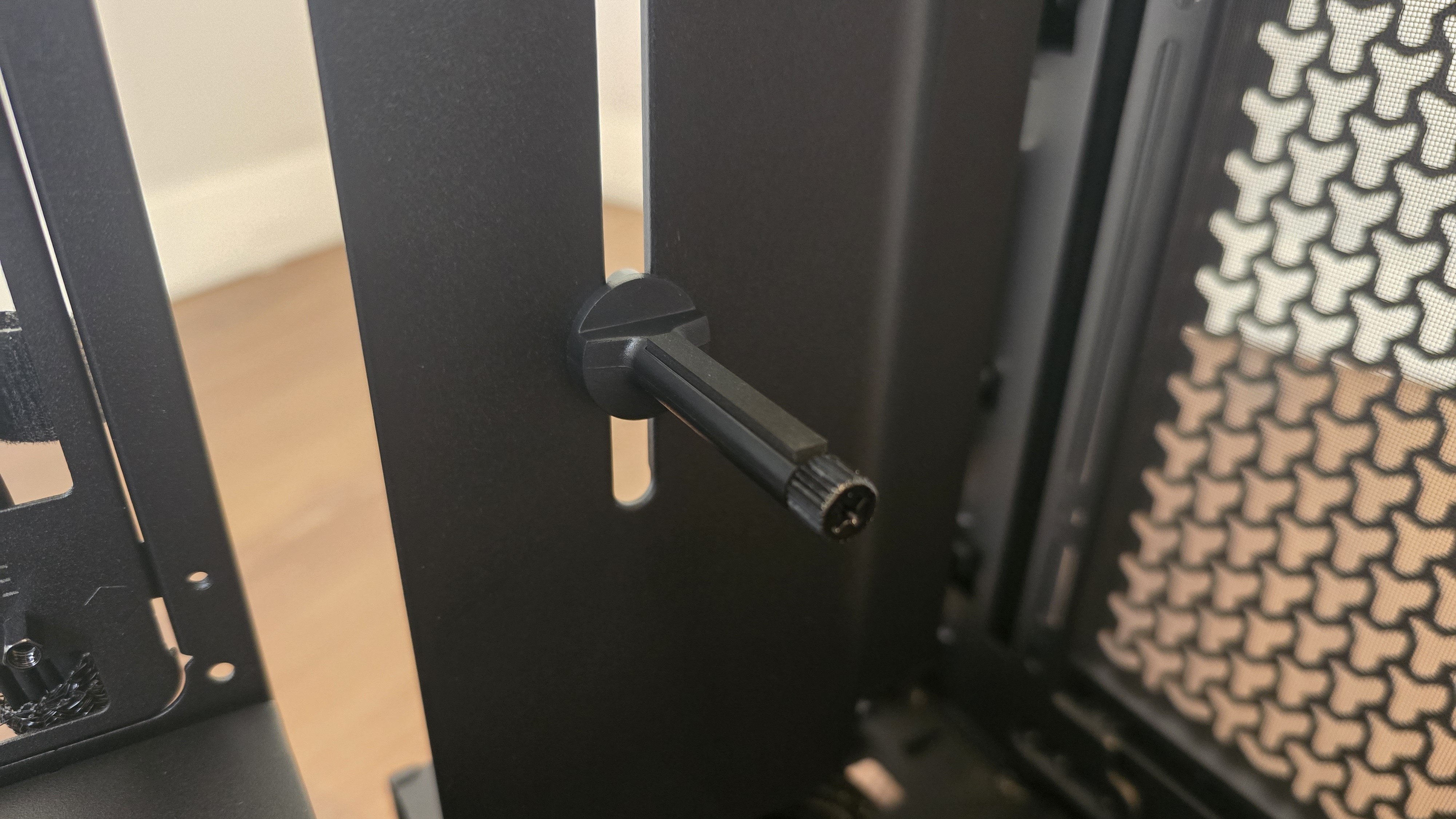
In the default configuration using front intake fans, there is a cable management bar with a built-in, adjustable GPU holder next to the motherboard (shown above). However, you can switch out the cable management bar with a fan-holding frame to enable the use of side intake fans (shown below).
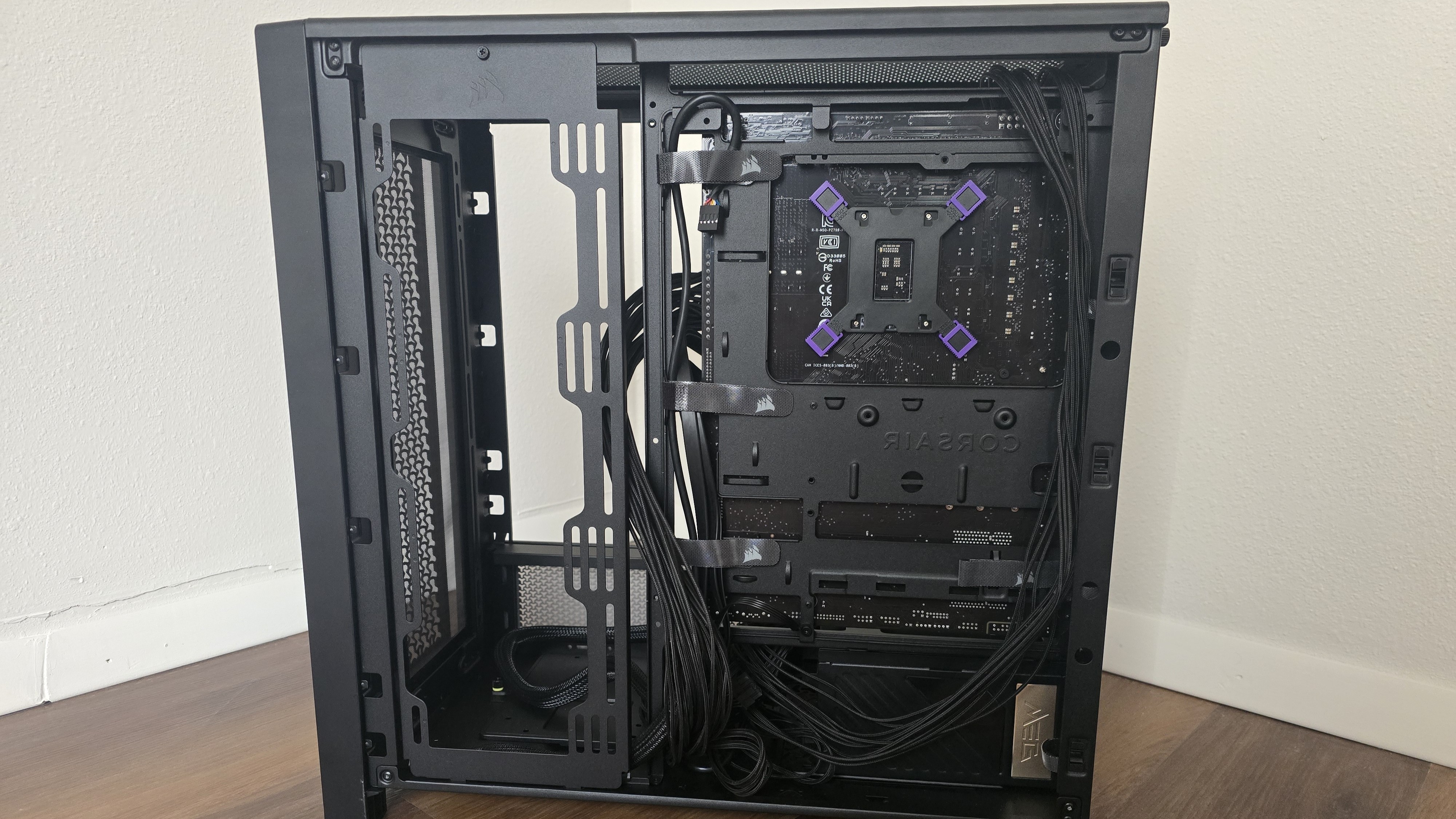
▶️ Radiator and fan support
This case can be equipped with up to 12 fans, and supports 360mm radiators in the front, top, or side-mounted.
▶️ Dust filters, Bottom View
The case features multiple dust filters, which are fairly easy to remove.
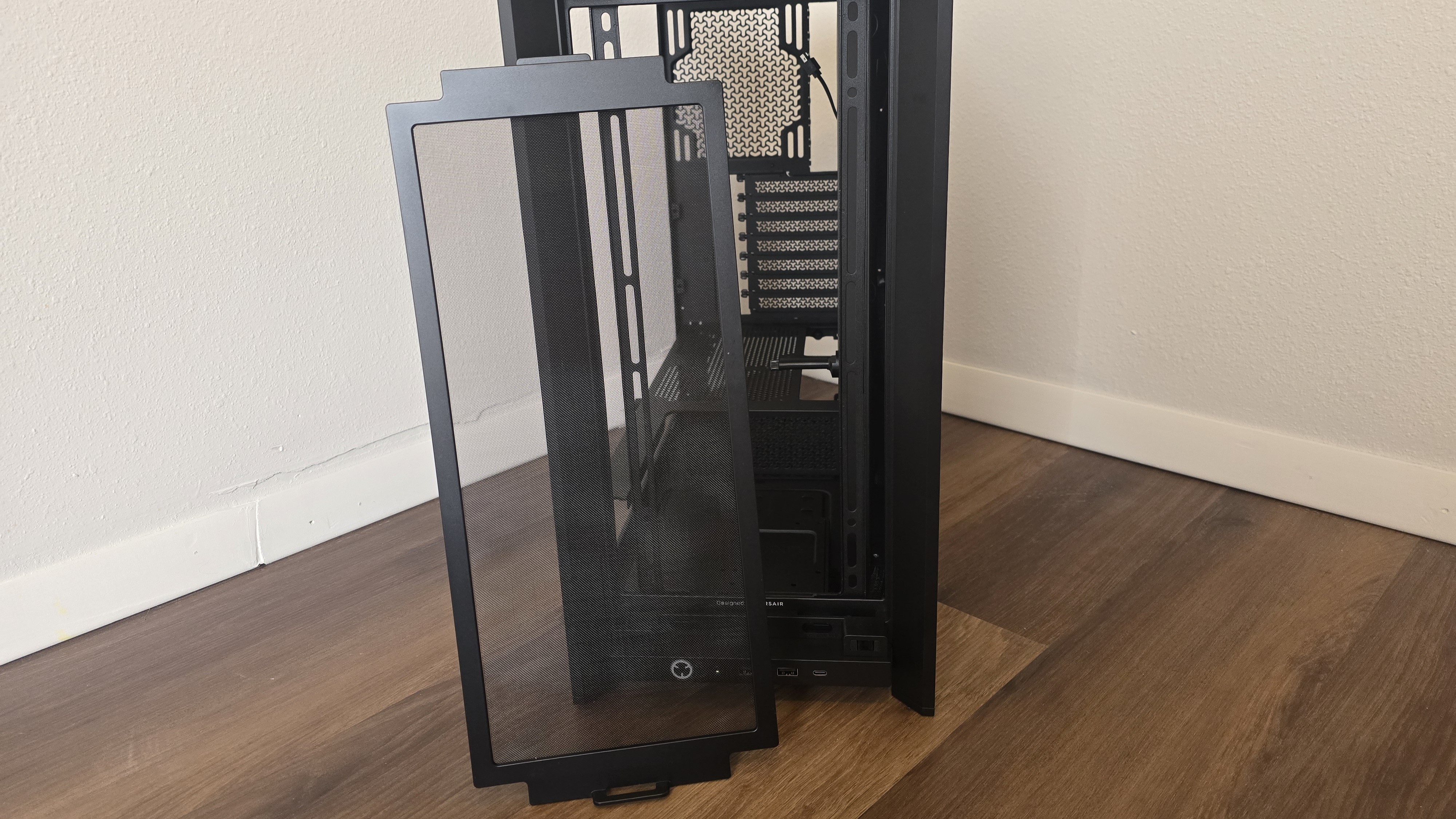
On the bottom of the case, there’s a smaller dust filter for the PSU, and four feet with rubber bottoms.
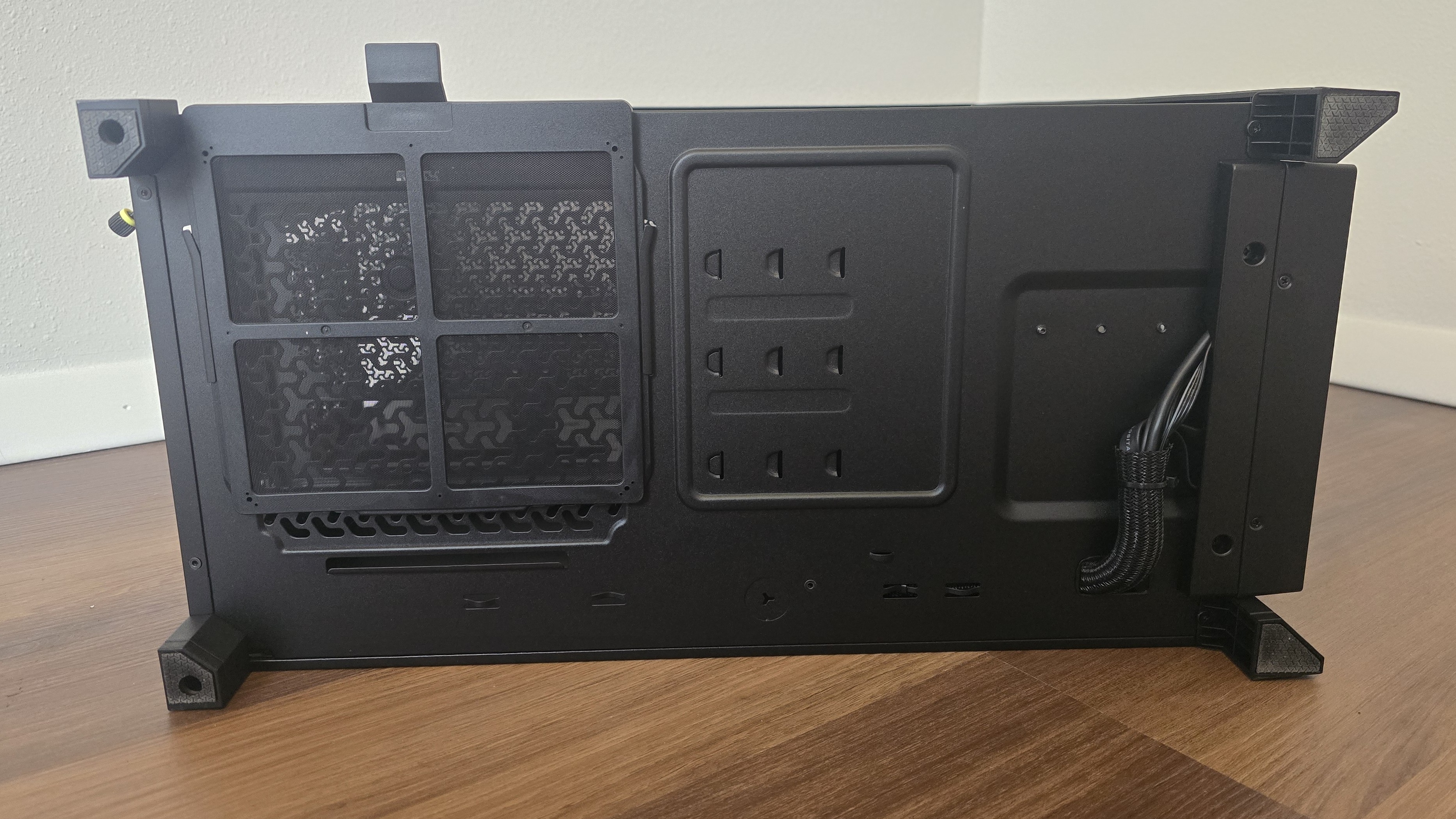
▶️ Rear side view, storage, and cable management features
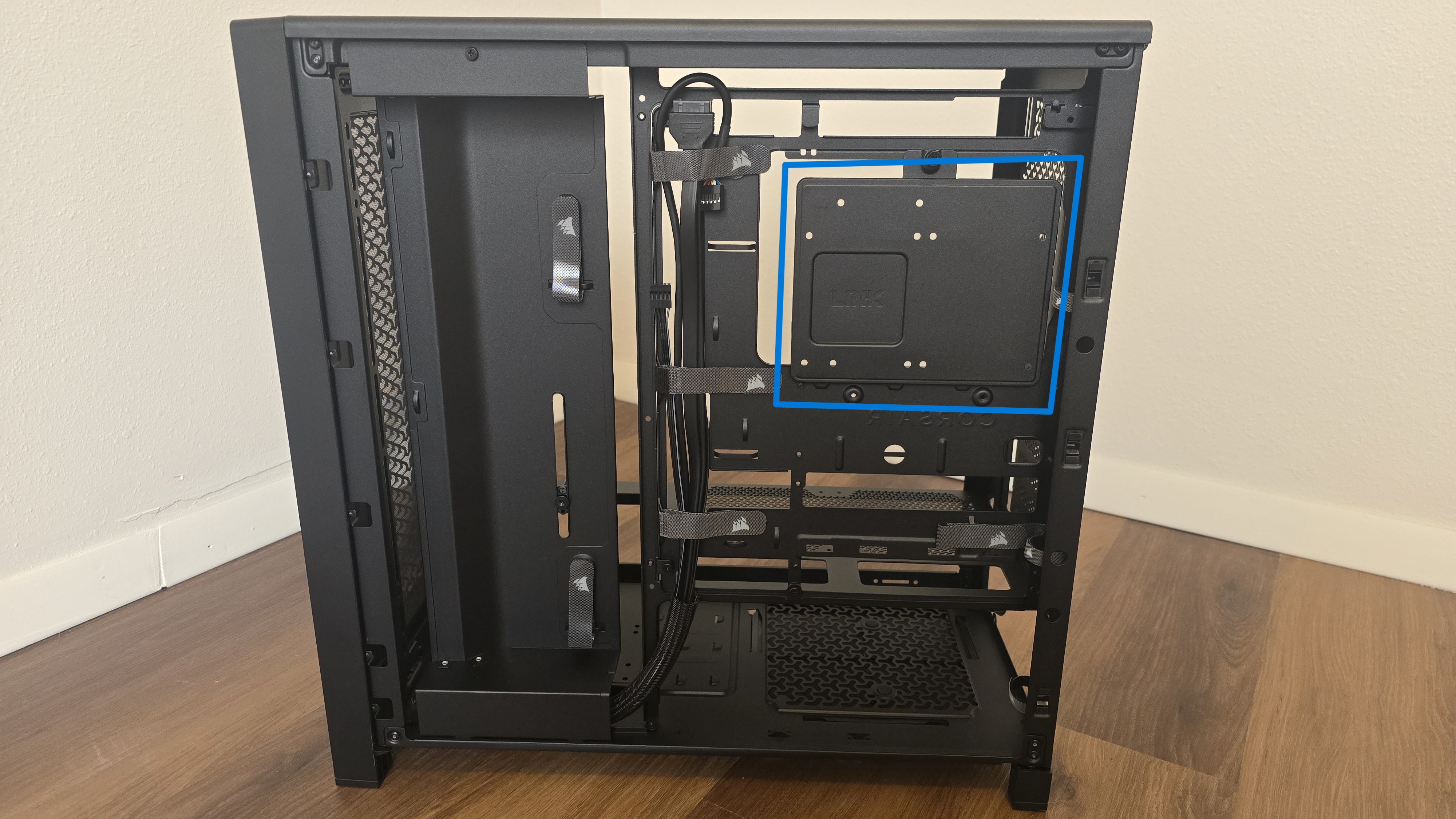
The default configuration has both a cable management bar with velcro straps and a routing path with straps to keep things tidy. There are two plates supporting hard drives and SATA SSDs, one behind the motherboard highlighted in the photo above. The other is located between the PSU and the front intake fans, shown below.
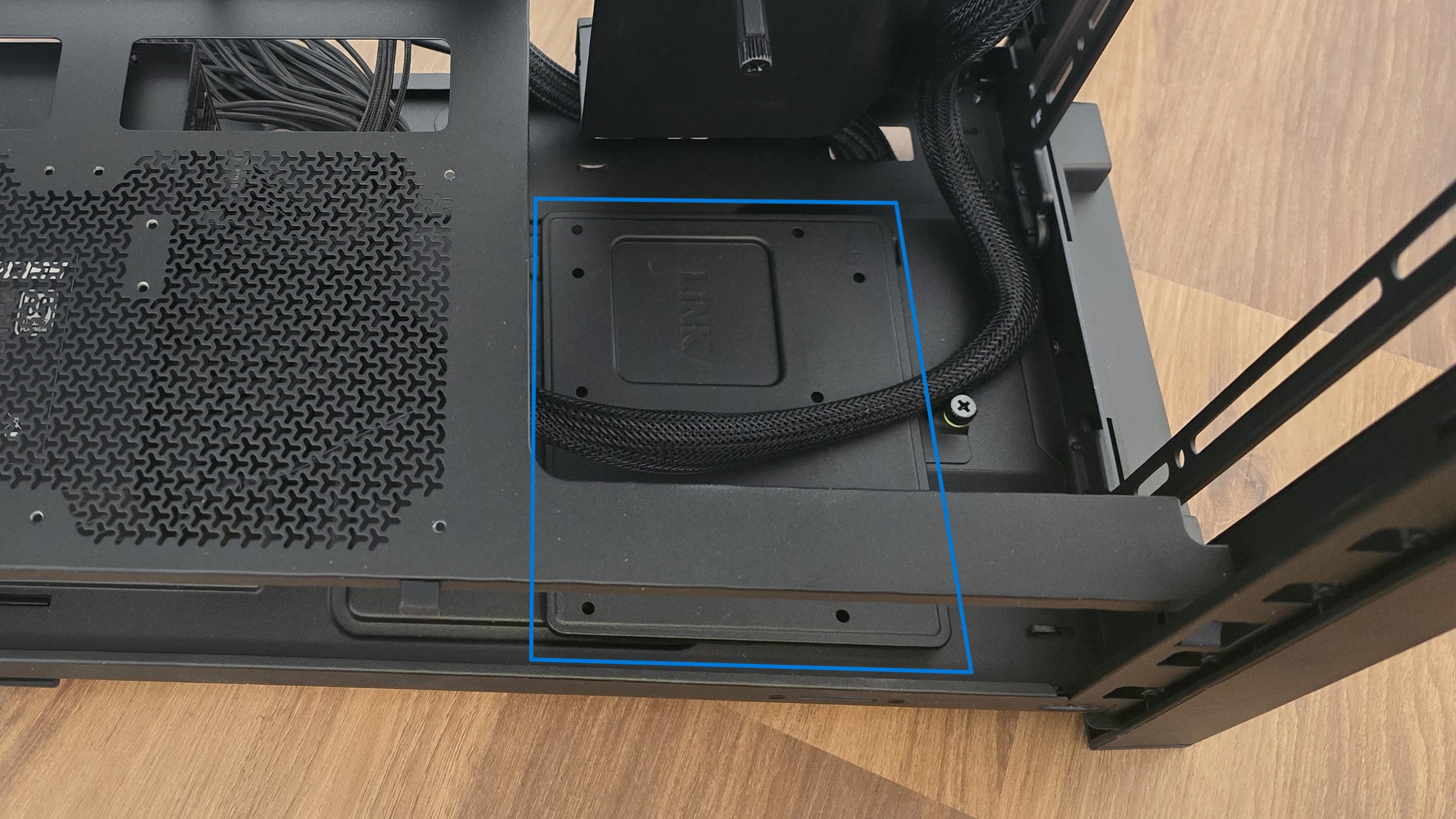
Here’s a more detailed look at the storage plate:

▶️ Front view, IO panel

The front of the case shows off a grille with Corsair’s distinct Y-design, behind which is a dust filter.
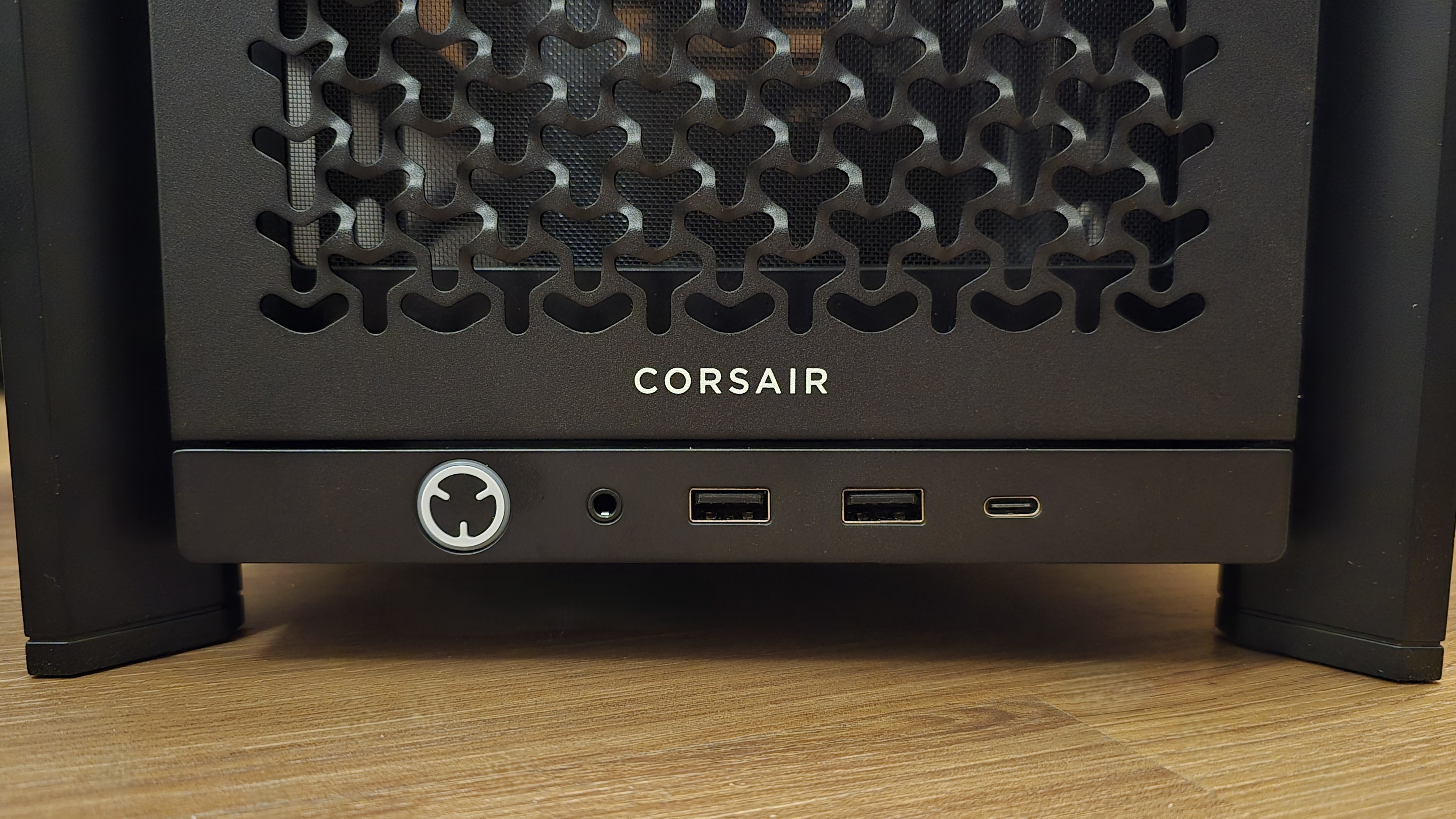
The included IO panel has (from left to right) a power button, audio jack, Two USB-A ports, and a USB-C port. As part of its modularity claims, Corsair says an upgraded IO panel will be available for purchase in Q2 2025.
▶️ Rear view
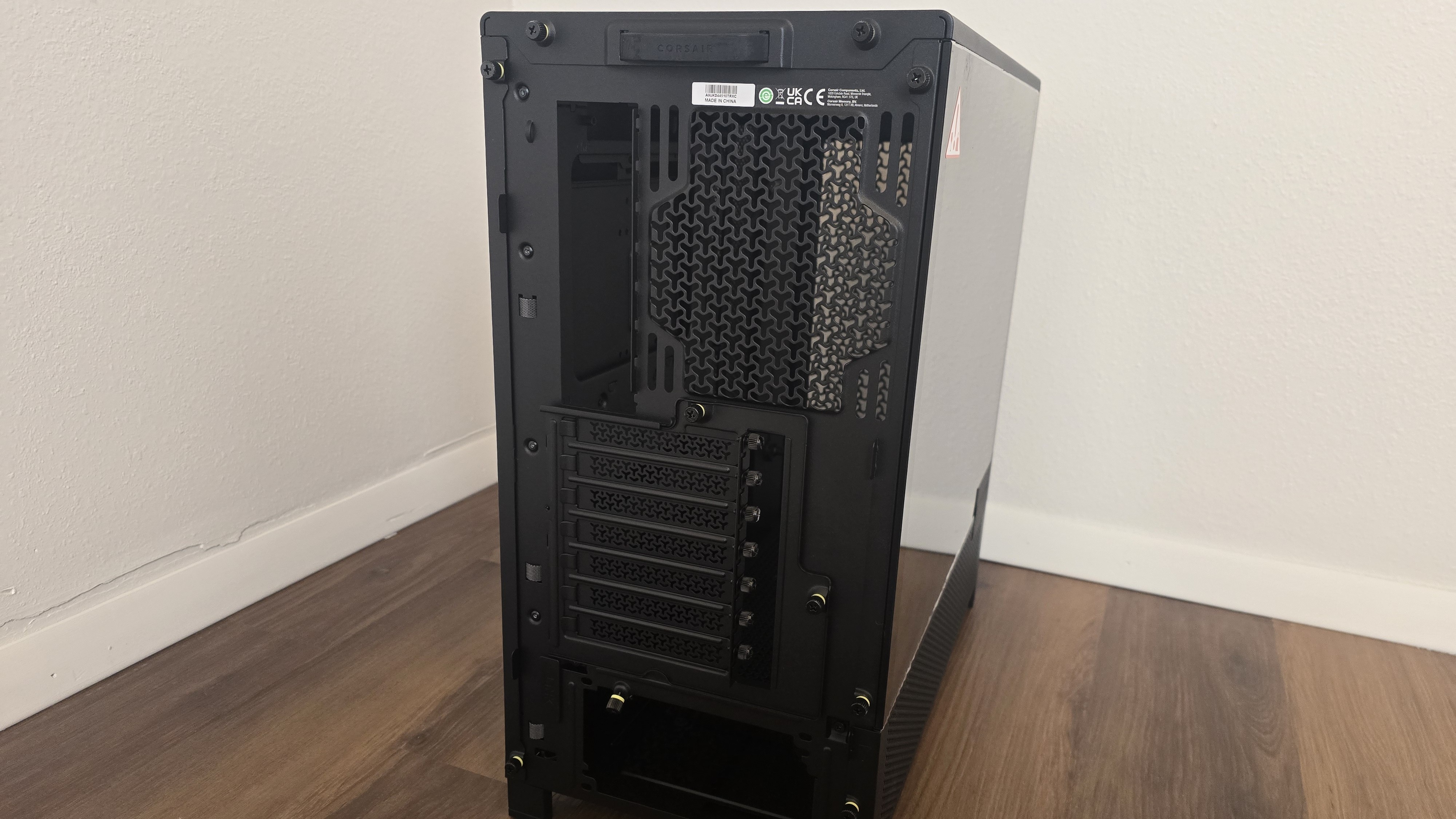
The rear view seems pretty standard, but there are a few things to note that stand out from the competition.The PCIe slots are removable because the case includes support for both vertical and horizontal GPU mounting. There’s also a strap handle at the top, but that’s only intended to be used for removing the top tray – don’t try to move the case with the strap, or you might break it!
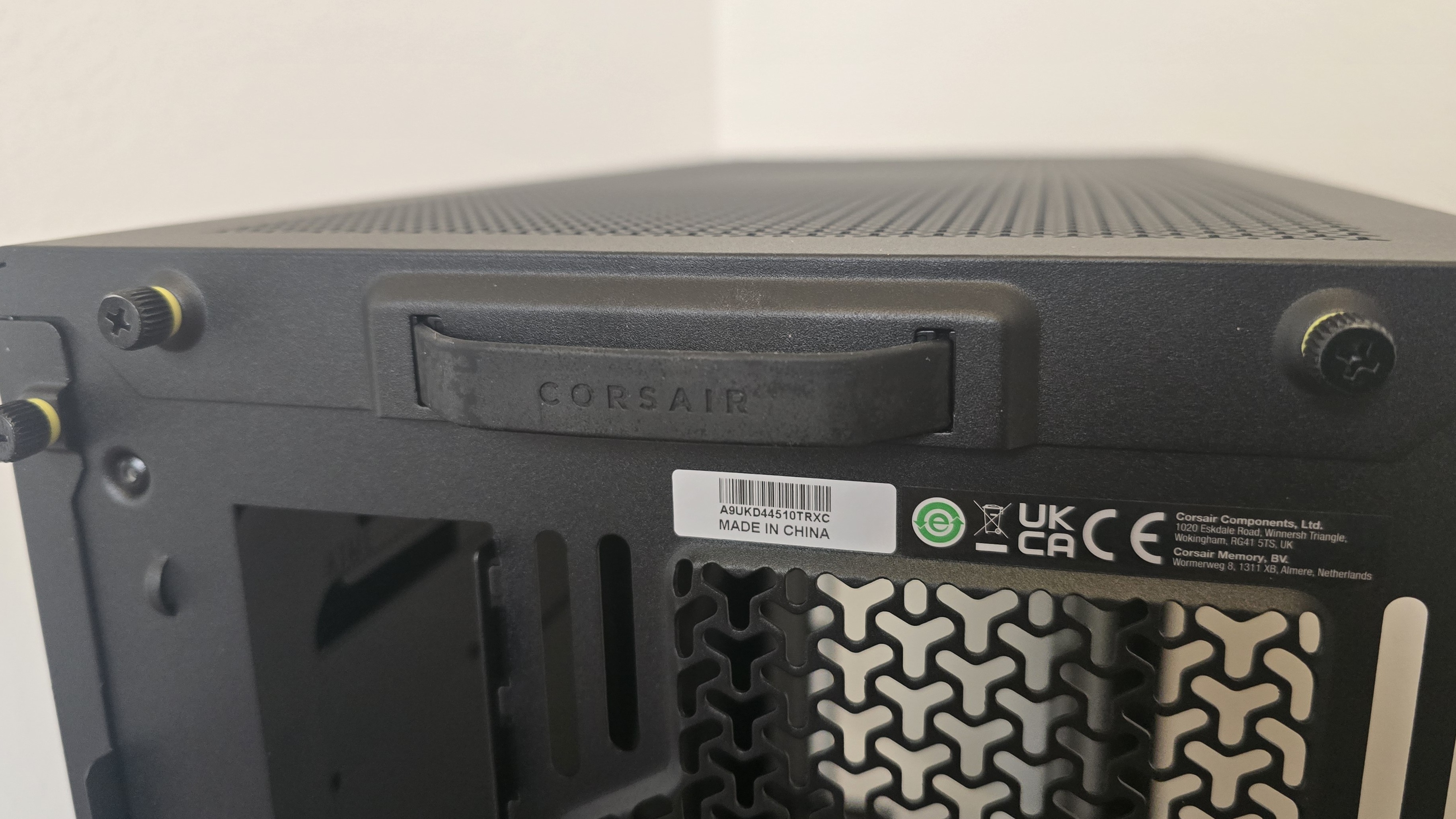
Thermal tests, test setup, and testing methodology
Swipe to scroll horizontally
CPU | |
CPU Cooler | Ocypus Iota A62 WH dual-tower cooler, configured with a single fan |
System fans | Ocypus Gamma F12 BK ARGB |
Motherboard | ASUS Z790-P Prime Wifi |
GPU | MSI RTX 4070 Ti Super Ventus 3X OC |

Our thermal tests are presented to give you more information about the product’s performance, but aren’t intended as the sole judgment of the chassis. The style, price, features, and noise levels of a case (if the case includes fans) should also be considered – and we all have different preferences. What I might like in a case, you might not, and that’s OK. My goal with these reviews is to give everyone, no matter their preferences, enough information to decide whether or not a product is right for them.
With today’s review, I’ve updated the configuration and testing methods I use for testing compared to previous reviews. For example, I used to use a single tower air cooler – but I’ve decided to use a dual-tower air cooler with a single fan in case reviews going forward.
The Frame 4000D can be configured in multiple ways: Both front and side-mounted intake fans are supported. For the results shown below, the case has been configured in a side-mounted configuration.
The measurements I’ve benchmarked this case against focus on the efficiency of the case’s thermal transfer. One set of benchmarks will show performance with fans set at full speeds for maximum potential. The other set of benchmarks will show performance with system and CPU fans speeds set to 30% for those who prefer silently running systems.
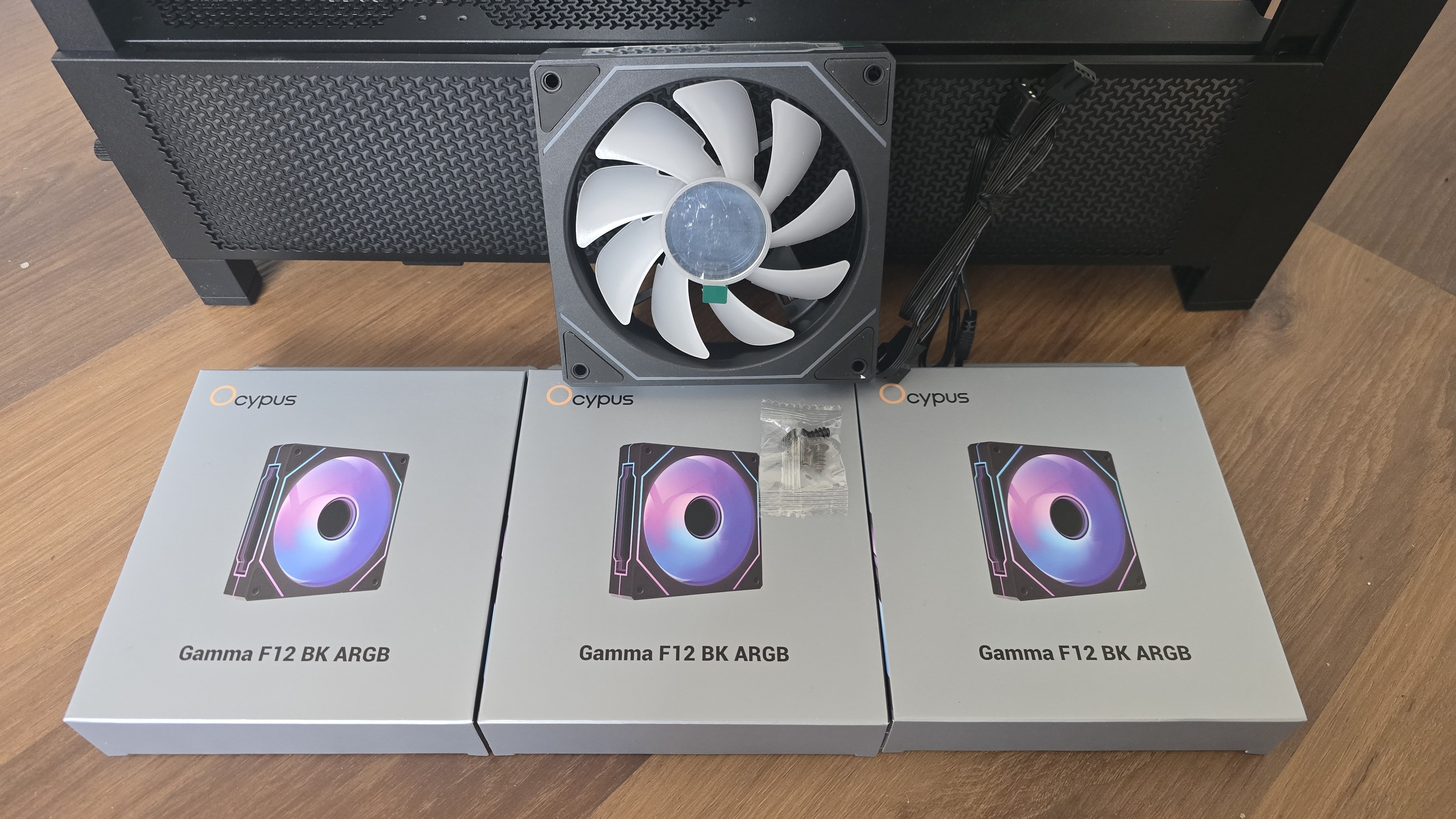
The version of the Corsair Frame 4000D computer case tested today does not include fans, though versions with fans can be purchased for as little as $5 more in the US. All cases shown in the benchmarks have been tested with Ocypus Gamma F12 BK ARGB fans for consistency.

 7 months ago
112
7 months ago
112







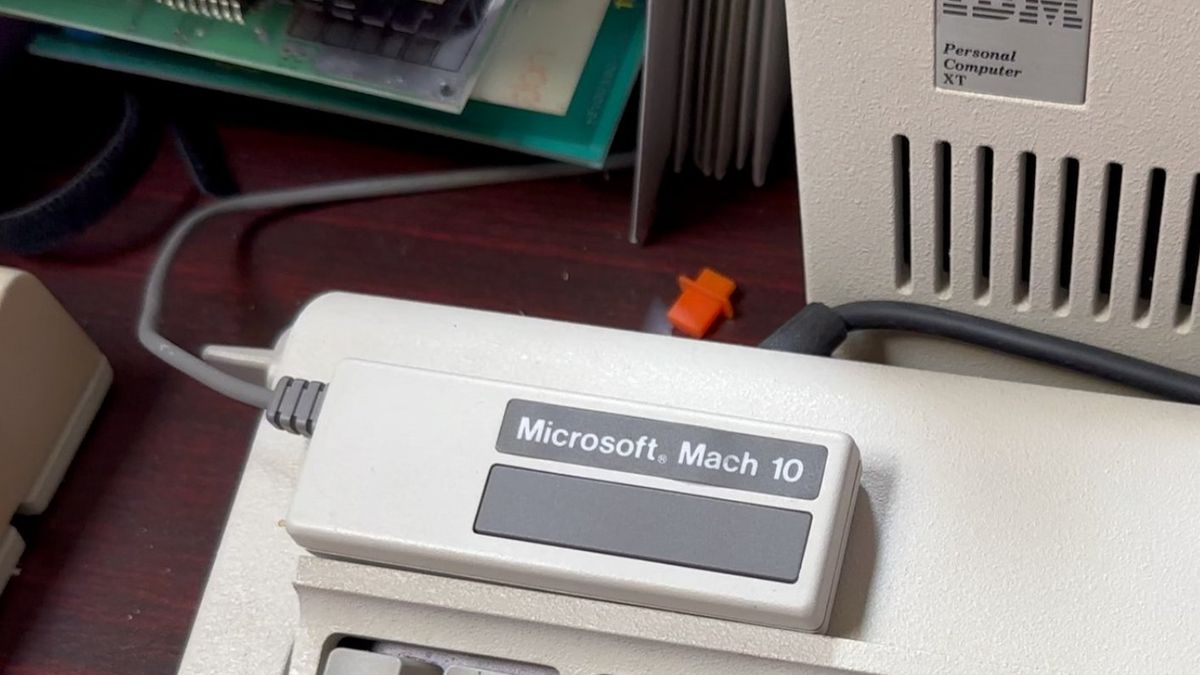
 English (US) ·
English (US) ·